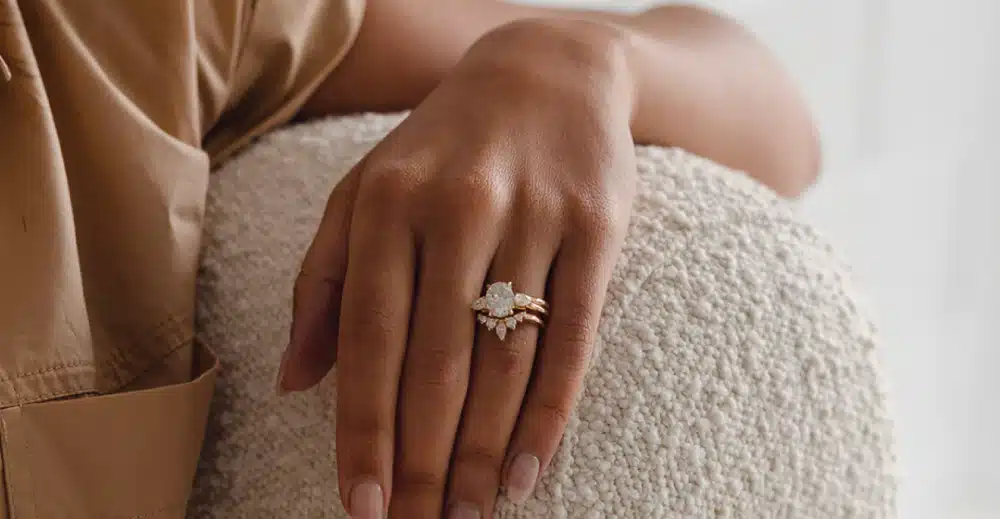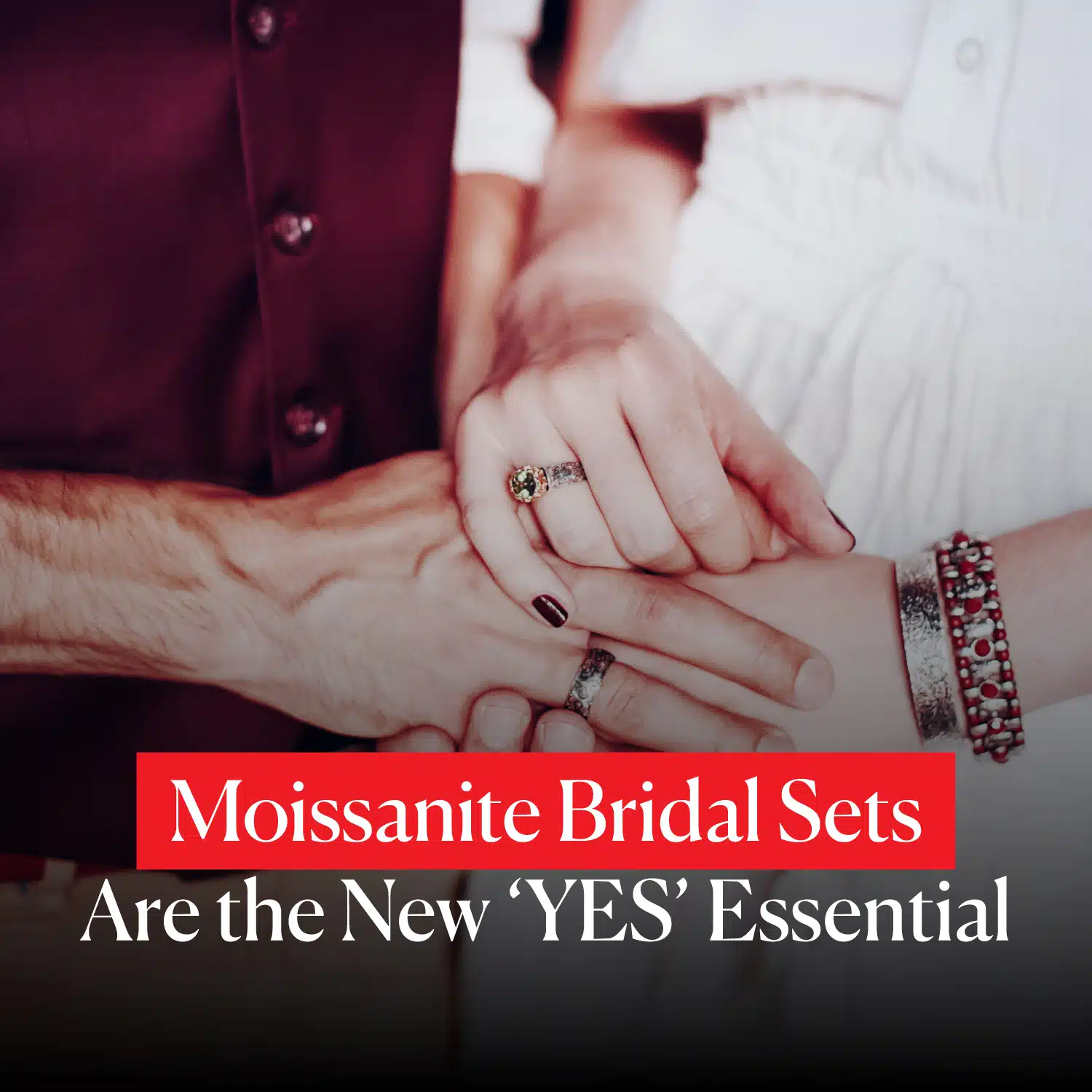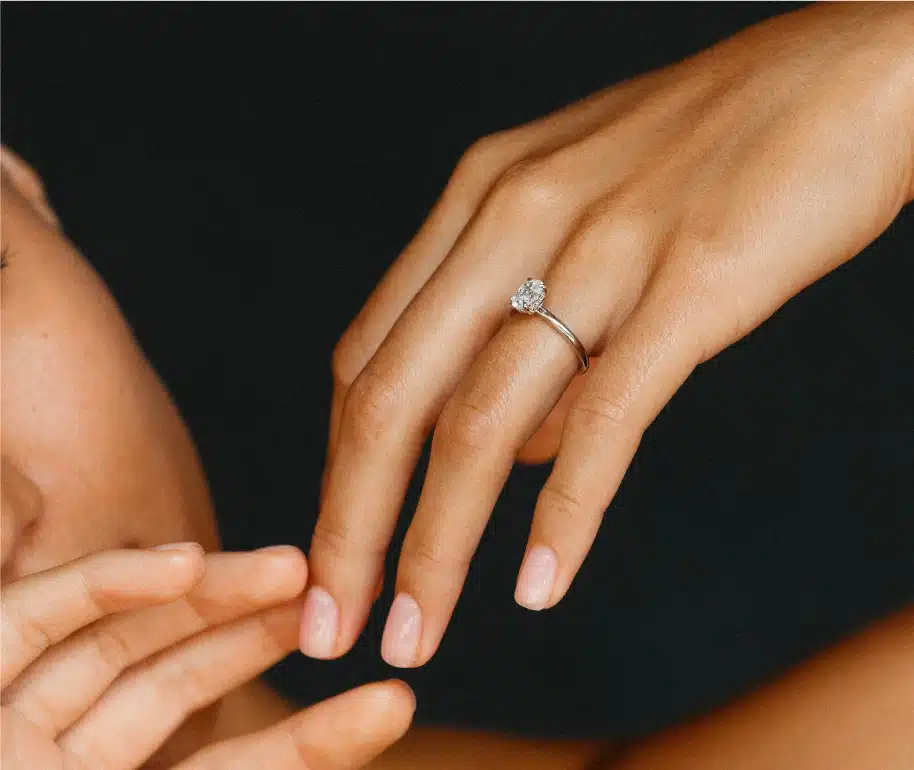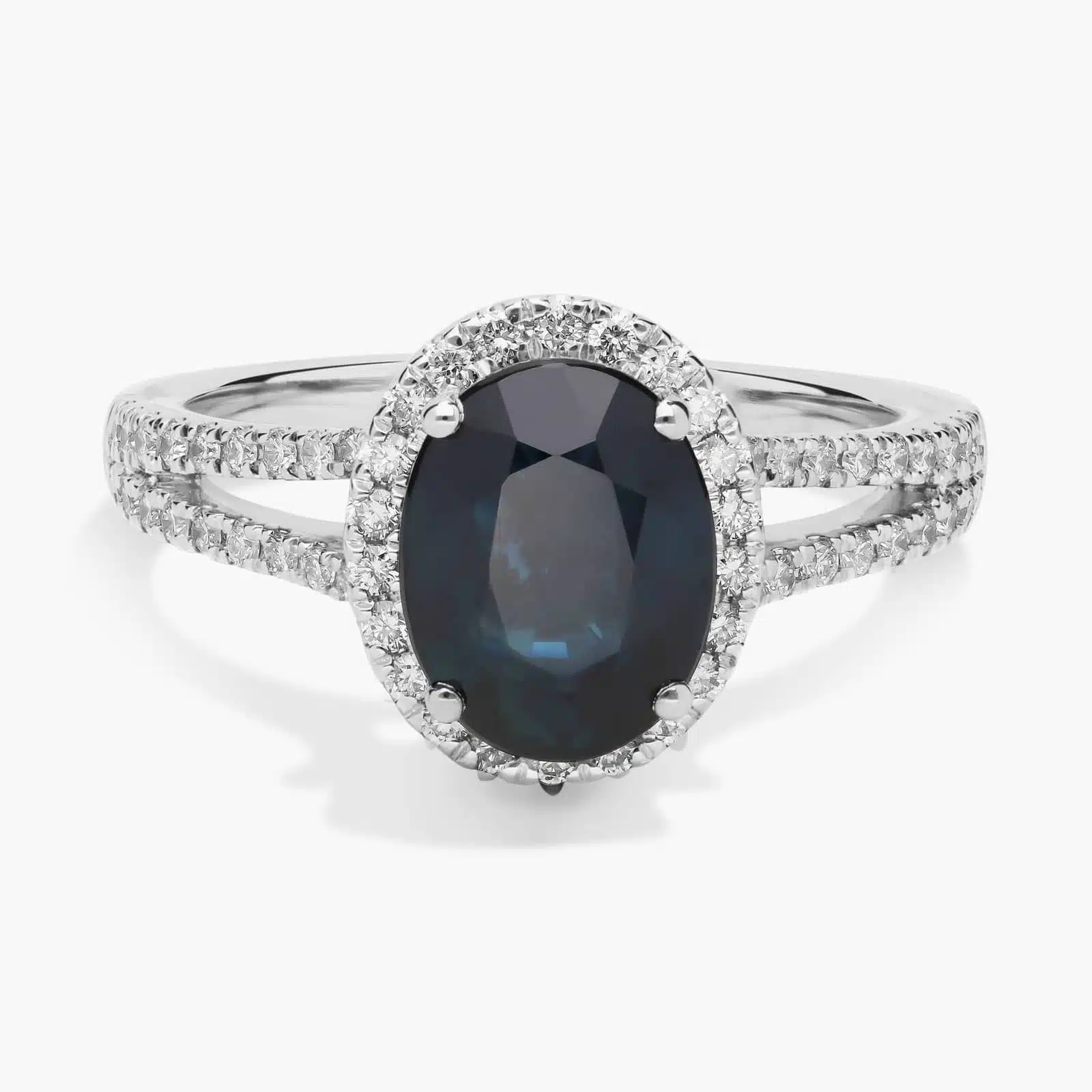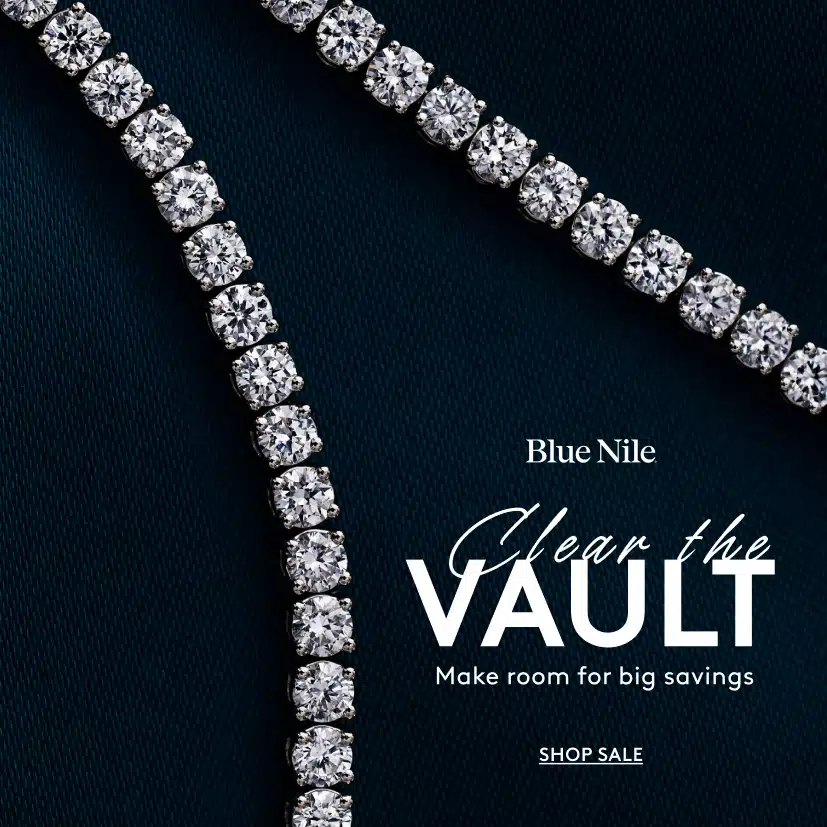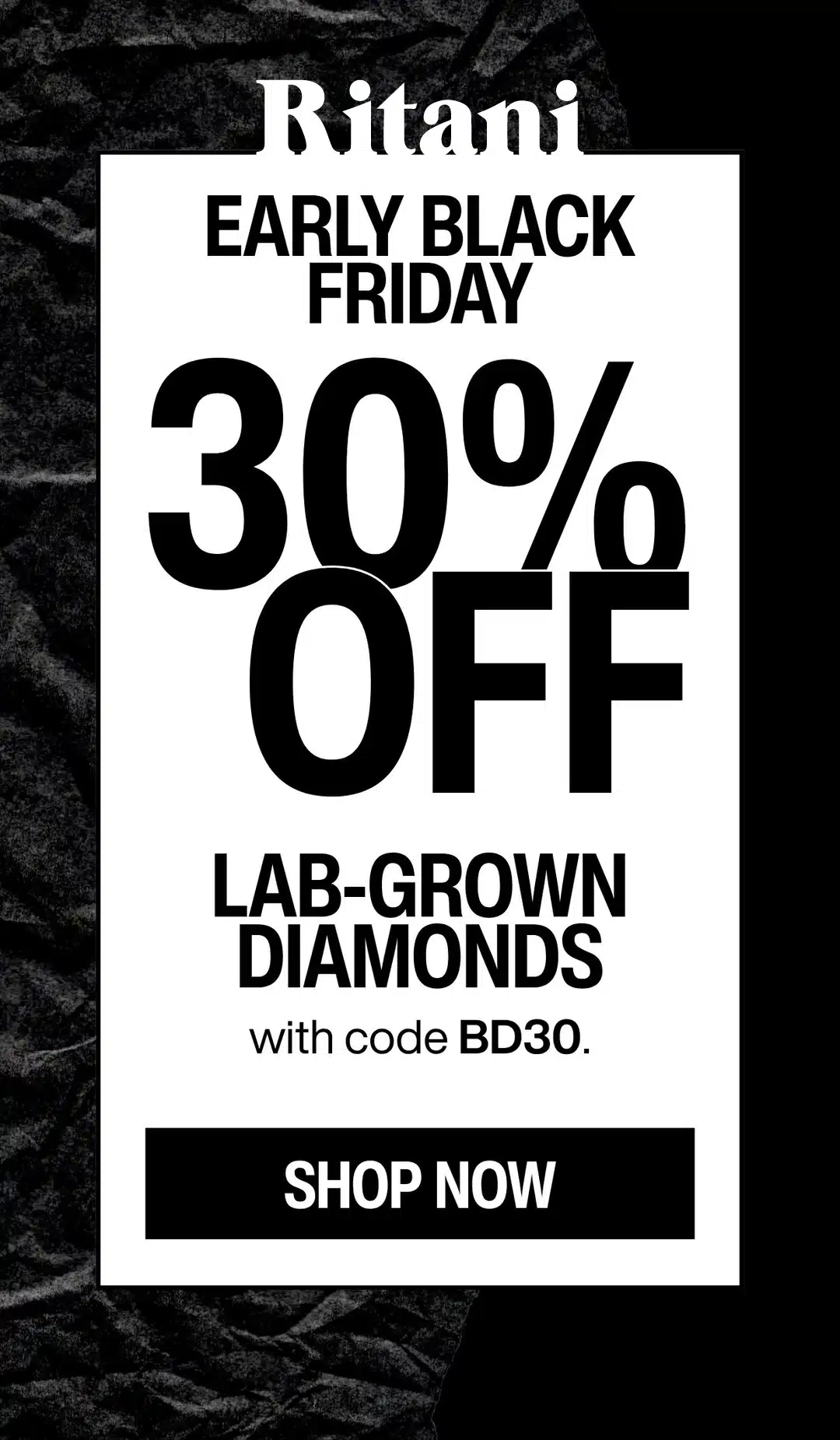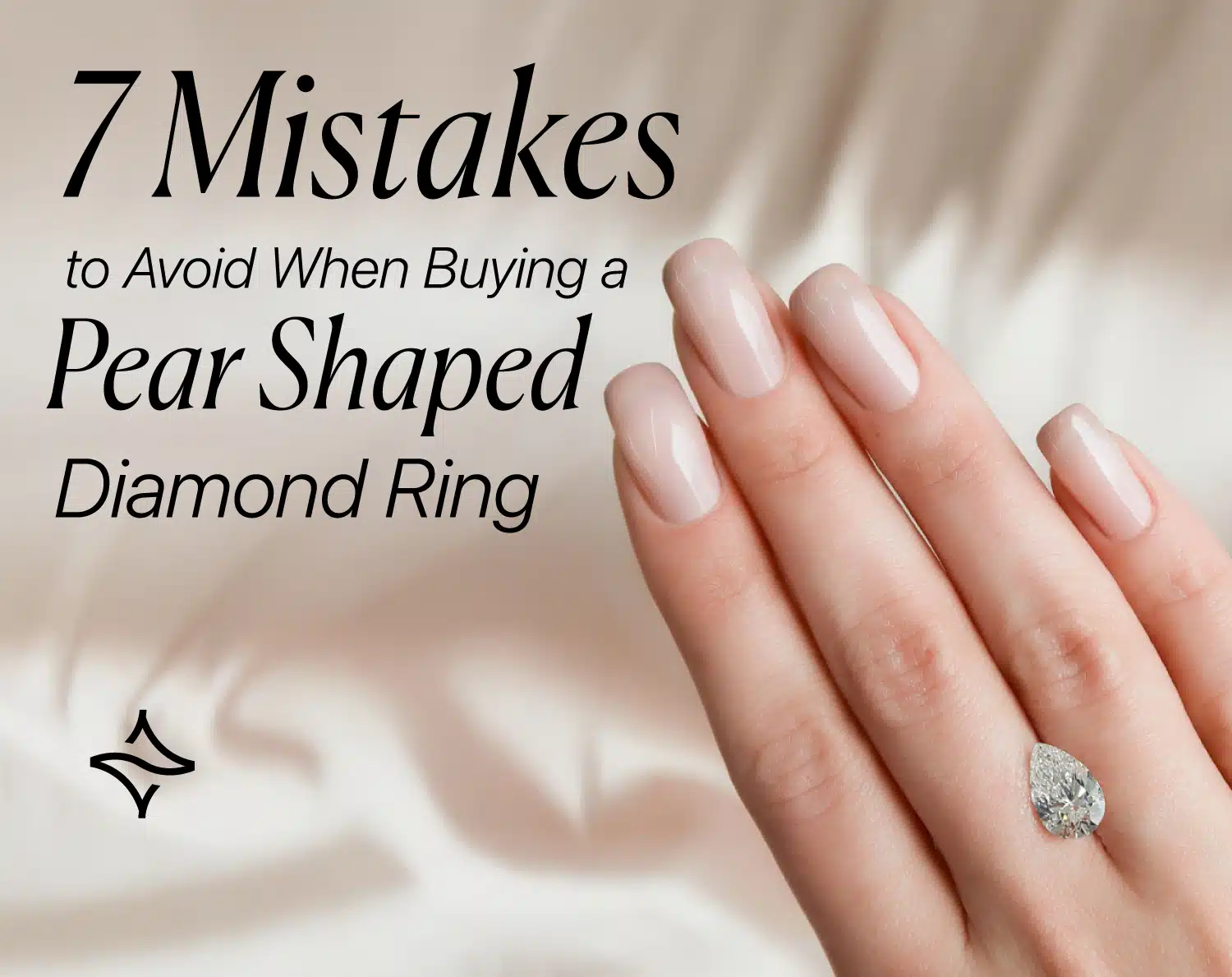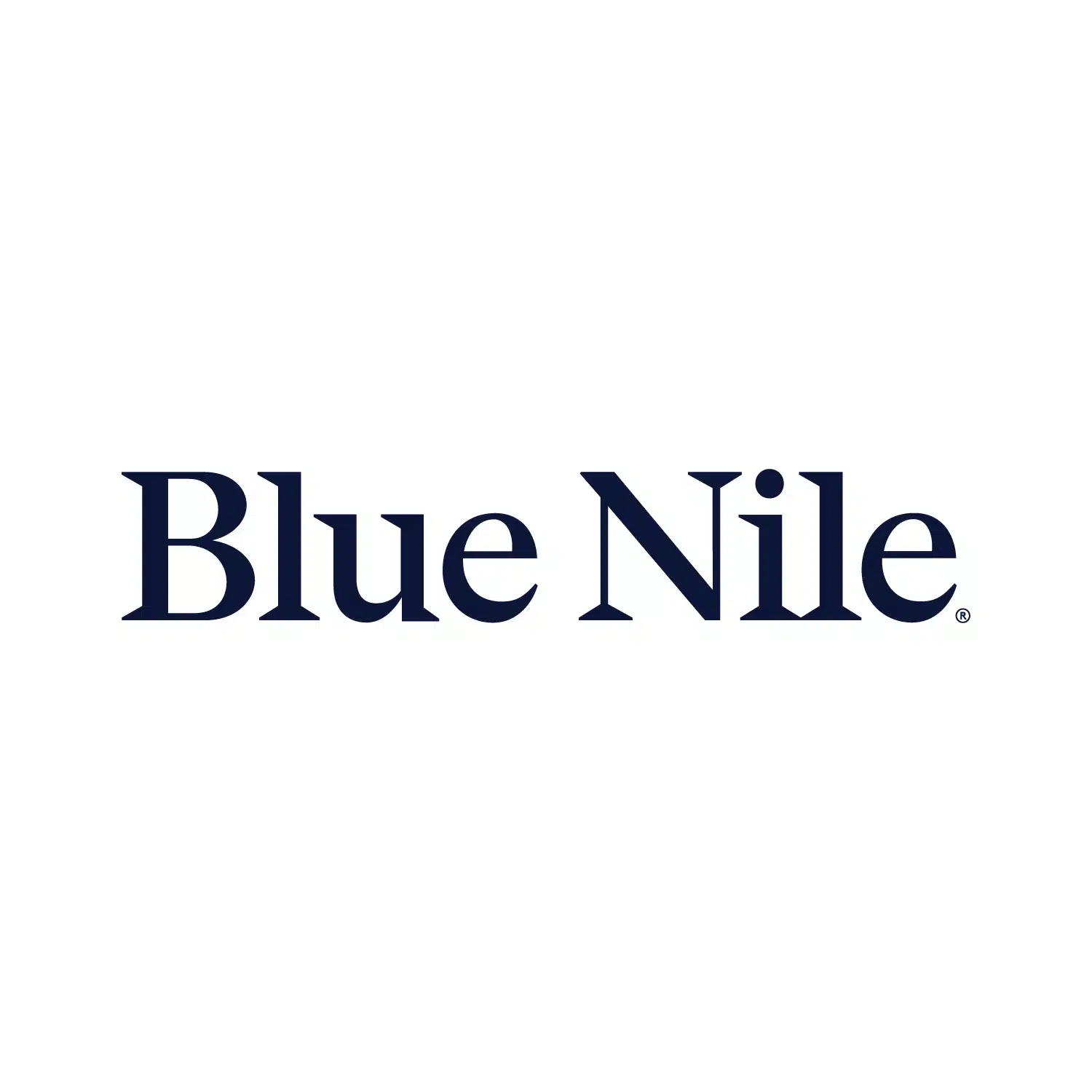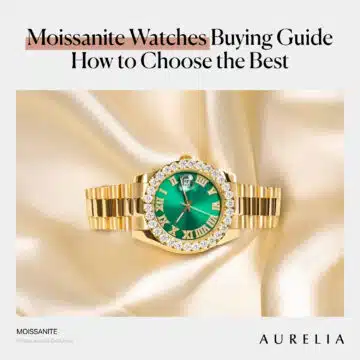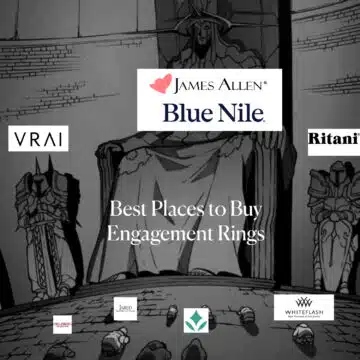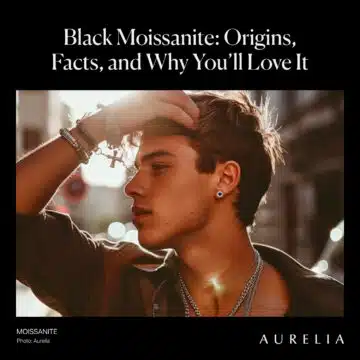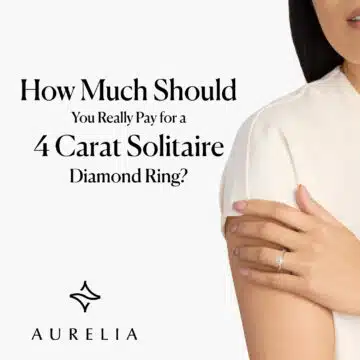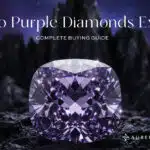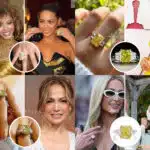The seven biggest mistakes to avoid when buying a pear shaped diamond ring are: choosing a stone with a severe “bow-tie” or poor shape symmetry, selecting a setting that leaves its fragile tip unprotected, going too low on color and clarity grades which this shape reveals easily, relying solely on a certificate that lacks an overall Cut grade, and buying sight-unseen without a high-quality video.
You’ve fallen in love with the elegant, unique silhouette of the pear shape. But as you browse, you’re hit with a wave of anxiety. “Why do some look so graceful and others look short and stubby? What is this ‘bow-tie’ everyone talks about? Will the tip chip?” As one Redditor perfectly asked, “What are the honest cons?”
Best Deal Of The Year – Final Days
Blue Nile’s “Clear The Vault” is ON.
Shop Fine Jewelry Upto 70% OFF.
*Exclusions may apply. See Blue Nile for complete details.
As your friend in the business, I am here to give you that honest, unfiltered guide. We are going to tackle the 7 most common traps that buyers fall into with this beautiful but complex shape.
For each mistake, I will provide a clear, powerful solution. By the end, you’ll be able to choose a breathtaking pear shaped diamond with complete confidence.
- A Cut Above: Pros and Cons of the Pear Shape
- Mistake #1: Ignoring the Dreaded "Bow-Tie" Effect
- Mistake #2: Choosing a "Wonky" or Unattractive Shape
- Mistake #3: Leaving the Delicate Tip Unprotected
- Mistake #4: Not Going High Enough on Clarity
- Mistake #5: Choosing the Wrong Color Grade
- Mistake #6: Relying on the Certificate for Cut Quality
- Mistake #7: Buying It "Sight Unseen"
- Is a Pear Shaped Diamond More Expensive?
- A Visual Guide to Pear Shape Sizes
- How to Frame Your Teardrop Masterpiece
- FAQs About Pear Shaped Diamond Ring
- The Verdict: A Shape for the Savvy & Stylish
Diamond IQ Test: Natural or Lab-Grown?
Two identical diamonds: GIA Certified, 1.51ct, D Color, VVS1, Ideal Cut. One is natural ($16,530), the other is lab-grown ($2,390). Choose the diamond you like better and see if you can match it to its origin.
A Cut Above: Pros and Cons of the Pear Shape
Before we dive into the common mistakes, you need a balanced, expert understanding of the pear shaped diamond itself. Its rising popularity is no accident; it’s a brilliant-cut stone that offers some incredible advantages in beauty and value.
But as your friend in the business, I need to be brutally honest with you: its unique beauty also comes with a unique set of challenges that can trap an unprepared buyer.
Let’s lay out the pros and cons right upfront with a simple scorecard. Then, we’ll dive deep into what each of these points really means for you.
| The Pros of a Pear Shape | The Cons of a Pear Shape |
| Looks Larger Than Its Carat Weight | GIA Does Not Assign a Cut Grade |
| Unique, Elegant & Flattering Shape | Prone to a “Bow-Tie” Effect |
| Excellent Value (10-30% Less Than Rounds) | The Tip Can Be a Vulnerable Point |
| Hides Inclusions Well | Shape Symmetry is Crucial & Variable |
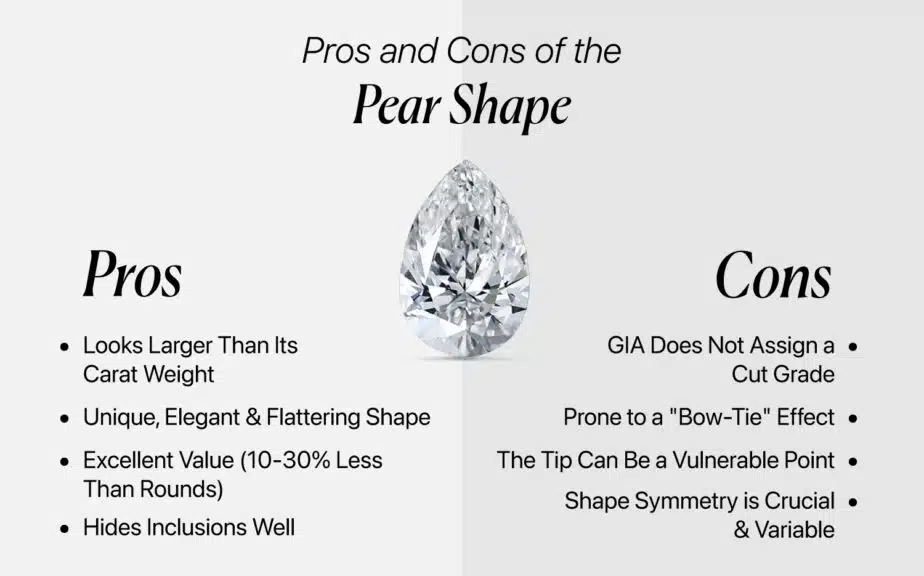
A Deeper Look at the Pros
This is the pear shape’s secret weapon and its most exciting advantage. Due to its elongated shape, a 1 carat pear shaped diamond ring has a much larger surface area than a 1-carat round diamond.
According to GIA, this large “face-up” size creates a powerful optical illusion, making the diamond look significantly bigger than its actual carat weight would suggest. For example, a typical 1-carat round brilliant measures about 6.4mm in diameter.
A well-proportioned 1-carat pear can be over 8mm long, creating an incredible “finger coverage” that makes a huge impact. For a buyer who wants the biggest-looking diamond for their budget, the pear shape is one of the absolute smartest choices.
To see exactly how it stacks up against its rivals, our complete guide on what shape diamond looks the largest is an essential read.
The pear shape is the perfect hybrid, combining the fiery brilliance of a round cut at its curved base with the sharp, sophisticated point of a marquise. This unique “teardrop” silhouette is incredibly elegant and is renowned for its flattering effect on the hand.
The elongated form naturally draws the eye up and down the finger, creating a visual line that can make the finger appear longer and more slender.
It’s a choice that feels both classic and completely distinctive, ensuring your pear shaped diamond engagement ring will stand out from the crowd.
Like most “fancy shapes,” the pear shape is a fantastic value. On the wholesale diamond market, like the Rapaport network, you can consistently expect to pay 10-30% less for a high-quality pear shaped diamond than for a round brilliant of the exact same carat weight and quality.
This significant discount comes down to simple geometry. Diamond cutters are able to preserve more of the original rough diamond crystal when cutting a pear shape compared to a round.
This higher “yield from rough” means less waste, and that cost saving is passed directly on to you. With the recent trend of diamond prices dropping, this value can be even more pronounced.
Because a pear shape is a “brilliant cut,” its 58 facets are specifically designed to chop up light and create a dazzling display of sparkle. This natural brilliance is excellent at camouflaging small internal flaws, or “inclusions.”
As an insider tip, the pointed end of the pear is particularly effective at this, as the facets converge and create a concentrated area of sparkle that can make even tiny imperfections completely invisible.
This is a huge advantage for value hunters, as it means a well-chosen and eye-clean SI1 clarity diamond can look just as flawless as a far more expensive VS1.
An Honest Look at the Cons
This is the first and most critical hurdle for a pear shape buyer. The Gemological Institute of America (GIA) provides an overall Cut grade for round brilliant diamonds, but it does not assign a cut grade for any fancy shapes, including the pear.
This means your certificate will give you ratings for Polish and Symmetry, but not an overall “Excellent” or “Very Good” grade to tell you how well the stone performs. This is because the shape has too many variables to create a single ideal standard.
This isn’t a dealbreaker; it simply means you have to be the one to judge the cut, a skill we will teach you in the next section. For context, you can see exactly what a full grading scale looks like in our Diamond Cut Chart.
This is the #1 pain point for pear and oval diamonds. The “bow-tie” is a dark, bowtie-shaped shadow that can appear across the center of the stone. It’s not an inclusion; it is an optical effect caused by facets that are not reflecting light back to your eye correctly.
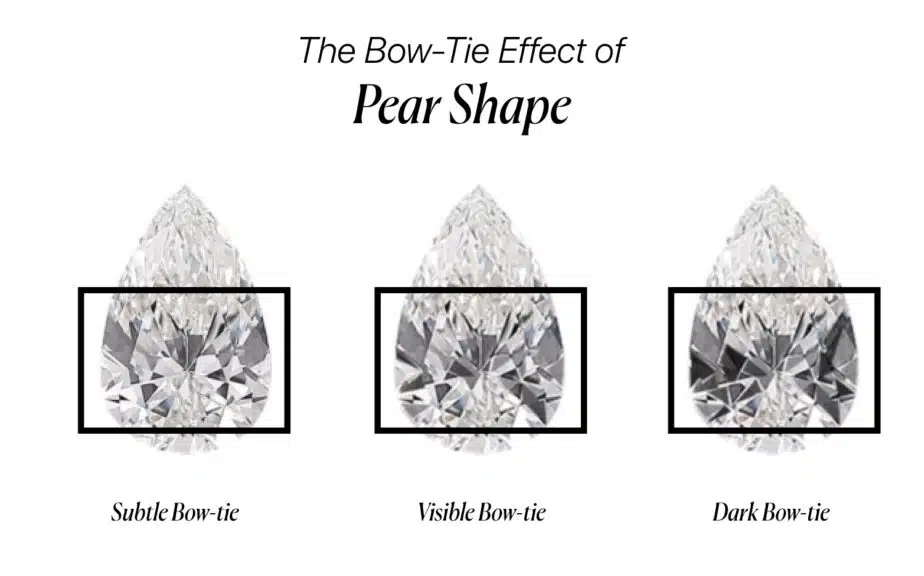
A faint, minimal bow-tie can be a charming characteristic, but a dark, prominent one is a “dead zone” that kills the sparkle. Spotting and avoiding this is a non-negotiable step to finding a beautiful stone. The phenomenon is identical to the one we detail in our Oval Cut Diamond Buying Guide.
A diamond is the hardest substance on earth, but it is not indestructible. The single, sharp point of a pear shaped diamond is its most vulnerable area. A hard, accidental knock on a countertop or a metal railing can, in a worst-case scenario, cause the tip to chip.
While this sounds scary, it’s a “con” that is 100% solvable with the right setting choice, which we will cover in our “Mistakes” section. It’s crucial to remember that all diamonds can be damaged under the right circumstances, as we explore in our guide, what things are strong enough to break diamonds.
This is the expert-level detail that separates a good pear from a breathtaking one. Unlike a perfectly symmetrical round, a pear shape’s beauty depends on the graceful curve of its “shoulders” (the rounded top part) and “wings” (the sides as they taper to the point).
Many pear diamonds are cut poorly, resulting in “uneven shoulders” (one higher than the other), “high shoulders” (making the stone look squared-off), or a shape that is too wide or too narrow. Finding a stone with beautiful, symmetrical curves is the final and most important test of a well-crafted pear.
To see how all the different shapes are evaluated, our main Diamond Shapes Guide is an essential resource.
Lets dive in to our main topic of this blog. 7 big mistake to avoid when buying a pear shape diamond ring. Lets start from Mistake no 1.
Mistake #1: Ignoring the Dreaded “Bow-Tie” Effect
Let’s start with the most infamous and important issue specific to pear shapes. You can find a diamond with a perfect color and clarity grade on its certificate, but if it has a bad bow-tie, it is not a beautiful stone. Ignoring this is the #1 mistake that leads to disappointment.
The Trap: Buying From the Certificate Alone
A buyer is shopping online, finds a diamond with fantastic specs (let’s say G color, VS2 clarity) for a great price, and they purchase it based on the GIA report alone. When the ring arrives, they are horrified to see a large, dark, permanent shadow right in the middle of the stone that kills the sparkle. They fell for a stone that was great on paper, but a dud in real life.
The Harsh Reality: What a Bow-Tie Actually Is
A bow-tie is not an inclusion or a flaw within the diamond. It is a visual effect—a shadow—created by the diamond’s own facets. Here’s the simple version of what’s happening:
- A diamond’s sparkle is created by its facets acting like a system of mirrors.
- They are supposed to catch light and reflect it back to your eye.
- In some pear shapes, the central facets are cut at angles that fail to reflect light back, and instead, they leak light out of the bottom of the stone.
- When you look at the diamond, you are seeing a direct reflection of the shadow of your own head and shoulders in that non-reflective “dead zone.” That shadow takes the shape of a man’s bow tie.
A faint, flickering bow-tie that appears and disappears as the diamond moves can be a charming part of the stone’s character. A dark, persistent one that stays black from every angle is a deal-breaker and a clear sign of a poor cut.
The Mehedi Solution: Become a Bow-Tie Hunter on the 360° Video
Your GIA report will not warn you about a bow-tie. Your only tool for spotting it is the high-quality, 360-degree video provided by top online retailers. Here is your simple, step-by-step checklist for what to look for:
- Focus on the widest part of the diamond’s center.
- Watch the video as the diamond rotates and tilts.
- A great pear shape will “light up” across its entire face.
- Look for a pattern that remains dark and static.
- If the bow-tie is a constant dark shadow, you must reject the stone.
Mistake #2: Choosing a “Wonky” or Unattractive Shape
This is the second major trap that is unique to the pear shape. Unlike a perfectly symmetrical round or square, the pear’s asymmetrical “teardrop” silhouette is incredibly complex. A poorly executed shape can look lopsided, stubby, or just plain “wonky.”
The Problem of Symmetry: Shoulders & Wings
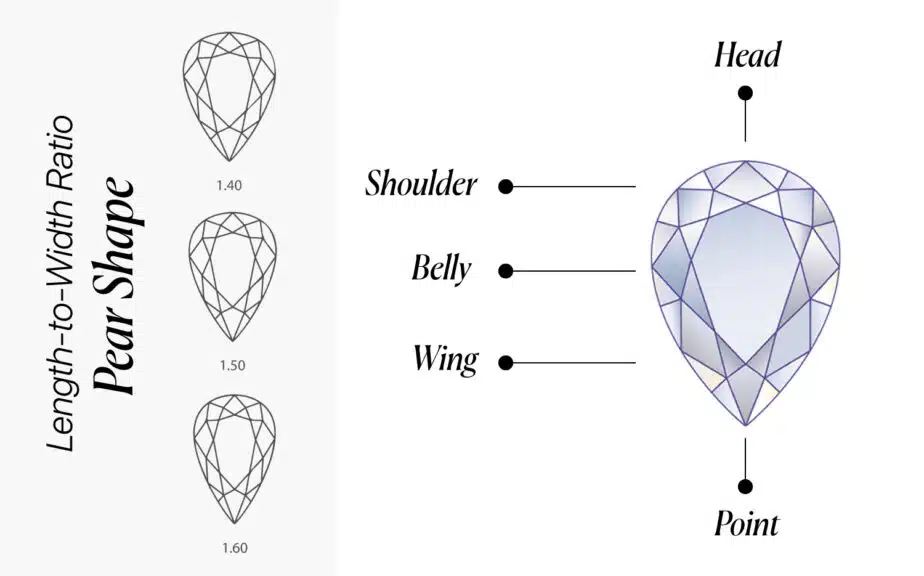
A pear’s shape is about more than its basic outline; it’s about its curves. An expert looks for beautiful, graceful symmetry.
- The Shoulders: This is the rounded, top part of the diamond. You must look for shoulders that are symmetrical and gently rounded.
- The Wings: These are the sides as they gracefully curve down to meet the point.
What to Look For
- Even, symmetrical shoulders.
- Gently rounded curves.
- A smooth, pleasing taper to the point.
What to Avoid
- Uneven Shoulders: One shoulder is higher than the other.
- Flat Shoulders: The top looks flat and boxy, not rounded.
- High Shoulders: The stone looks triangular and less graceful.
The Length-to-Width Ratio (L/W)
The second part of the shape puzzle is its overall silhouette. Is it a wider, “chubbier” teardrop, or a long and slender one? This is determined by the Length-to-Width Ratio, which is listed on the GIA report. There’s no “best” ratio, but you need to know which one matches your personal taste.
| Ratio Range | Style Description | Mehedi’s Expert Take |
| < 1.50 | Wider, “Chubbier” Look | Can feel less elegant and more squat. |
| 1.55 – 1.75 | The Classic “Teardrop” | This is the absolute sweet spot for a graceful, classic pear. |
| > 1.75 | Elongated & Slender | A more dramatic, modern, and finger-slimming look. |
The Mehedi Solution: A Two-Step Shape Analysis
This is how you guarantee you get a beautiful shape every time:
- Decide Your Ratio: Look at the table above and decide which style you love, then use the L/W ratio filter on the retailer’s website to narrow your search to only stones with your preferred silhouette.
- Visually Inspect: Once you have your shortlist, watch the 360° videos and become a hawk for symmetry. Reject any stone with uneven or flat shoulders.
By combining the numbers on the certificate with your own critical eye, you will find a perfectly proportioned and breathtakingly beautiful pear.
Mistake #3: Leaving the Delicate Tip Unprotected
This is a mistake that can lead to a literal broken heart. A diamond is the hardest natural substance on earth (a 10 on the Mohs scale), but it is not indestructible. While it’s exceptionally resistant to scratches, a hard enough blow at just the right angle can cause it to chip or fracture.
For a pear shaped diamond, that single, sharp point is by far its most vulnerable area.
The Trap: Choosing a Setting Based on Style Alone
A buyer falls in love with the diamond and then picks a setting based only on its aesthetic, without considering its protective function. They choose a standard 4-prong setting that leaves that beautiful, sharp tip completely exposed to the world.
The Harsh Reality: That Tip is a Magnet for Trouble
Think of the physics. That tiny point concentrates all the force of an accidental impact. A quick knock against a granite countertop, a metal railing, or a car door that would just glance off a round diamond can be a devastating blow to the unprotected tip of a pear.
This isn’t just a minor issue; it’s a critical vulnerability you must address. This is a key reason we have a guide on what things are strong enough to break diamonds—to educate buyers on these real-world risks.
The Mehedi Solution: Your Setting is Your Insurance Policy
This is, thankfully, the easiest mistake in the world to solve. You MUST choose a setting that is specifically designed to protect that delicate point. For any pear shaped diamond engagement ring, this is non-negotiable.
The V-prong is a masterclass in elegant engineering. It is a single metal prong that is grooved into a “V” shape and wraps snugly and securely around the pointed tip of the diamond. It provides excellent protection without adding a lot of visual bulk, perfectly preserving the diamond’s beautiful teardrop silhouette.
A classic solitaire with this feature, like this beautiful V-Prong setting from James Allen, is a perfect and very popular choice.
A bezel setting (or a partial bezel) encircles the tip of the diamond with a continuous metal rim. This offers the absolute maximum level of protection and creates a very modern, sleek look.
For someone who is extremely active or very hard on their hands, a ring like this elegant Bezel Set ring from James Allen is a fantastic and worry-free choice.
Blue Nile is one of the biggest and most recognized online jewelry retailers, offering an extensive and exclusive inventory. Their high-resolution images are improving and getting closer to the quality offered by James Allen, while their prices remain highly competitive. Right now, Blue Nile offers up to 30% savings on jewelry during a limited-time sale.
WHAT WE LOVE ABOUT THEM:
- 30-day no-questions-asked return policy, with a prepaid shipping label provided by Blue Nile.
- Lifetime warranty on all purchases.
- Free shipping on every order.
- Complimentary services every six months, including prong tightening, repolishing, rhodium plating, and cleaning.
- Insurance appraisal included with your purchase.
- One free resizing within the first year.
- High-quality images available for roughly half of their diamond selection.
- 24/7 customer service support.
- Full credit toward future upgrades, as long as the new item is at least double the value.
- Best-in-class order fulfillment process.
Mistake #4: Not Going High Enough on Clarity
This is a very easy mistake to make. If you’ve been researching brilliant cuts like the round, you’ve probably heard the #1 value-hunting tip is to find an “eye-clean” SI1 or even SI2 diamond. While this is fantastic advice for a brilliant cut that hides flaws in a storm of sparkle, applying this exact same logic to a pear shape can be a costly error.
The Trap: Treating a Pear Like a Round Brilliant
A buyer, determined to get the best possible value, filters their search for an SI1 clarity grade. They find a 1.5 carat pear for a fantastic price, see that the GIA certificate confirms the SI1 grade, and make the purchase, feeling like they’ve won.
But when the ring arrives, they are devastated to see a small but noticeable black crystal inclusion right in the large, open, rounded part of the stone.
The Harsh Reality: A Pear Has Two Different Clarity Zones
A pear shaped diamond is a hybrid cut, and it has two distinct zones when it comes to hiding inclusions:
- The Pointed Tip: This area is a brilliant-cut powerhouse. The facets converge here, creating a concentration of sparkle that is exceptionally good at camouflaging small inclusions.
- The Rounded End: This part of the stone is much more open and has a larger, more exposed table area. It behaves more like a step cut, where inclusions can be much more obvious. A flaw that would be invisible at the tip can be a glaring issue here.
Your Pear Shape Clarity Guide
| Clarity Grade | Mehedi’s Expert Take |
| SI2 | Very Risky. Finding an eye-clean one is incredibly rare. Best to avoid this grade for pears. |
| SI1 | The Value Hunter’s Zone. An eye-clean SI1 is a fantastic value, but you MUST verify with video that any inclusions are minor and located near the tip. |
| VS2 | The Sweet Spot. This is my top recommendation for a guaranteed eye-clean stone at a great price. A perfect balance. |
| VS1 / VVS2 | The Worry-Free Zone. These will be flawless to the naked eye. A safe but more expensive choice. |
The Mehedi Solution: Aim for VS2, But Hunt for a Great SI1
My baseline recommendation for a stress-free purchase is to set your clarity filter to VS2. This is your safety net. However, if you are a savvy shopper with a good eye, you can find incredible deals in the SI1 category.
The key is that you must use the 360-degree videos to act as your own gemologist and ensure any inclusions are not visible to the naked eye. For a complete masterclass on what to look for, our definitive guide on what is the best diamond clarity has you covered.
Mistake #5: Choosing the Wrong Color Grade
This is a subtle mistake, but one that can lead to disappointment. A buyer correctly learns that G and H color diamonds are the sweet spot for value, so they confidently choose an H-color pear shape to be set in a bright white platinum band.
When it arrives, they are surprised to see a very faint, but noticeable, warmth at the very tip of the diamond.
The Harsh Reality: Color “Pools” in a Pear Shape
Just like a real teardrop, color tends to pool at the point of a pear shaped diamond. The sharp, pointed tip acts like a focal point that can concentrate the diamond’s natural body color, making it appear one or even two grades warmer than it would in the center of the stone.
An H color that looks perfectly white in a round brilliant might show a subtle warmth at the tip of a pear.
The Mehedi Solution: Choose Your Color Based on Your Metal
This is a non-negotiable rule. The color of your metal band directly affects how you will perceive your diamond’s color.
Your Pear Shape Color Guide
| Your Metal Choice | Your “Sweet Spot” Color Grade | The Expert Reason |
| White Gold or Platinum | H Color or Better | The H grade will appear bright and white. Anything lower can create a distracting contrast with the icy metal. |
| Yellow or Rose Gold | I or J Color | A savvy buy! The warm metal perfectly complements the stone’s slight warmth, making it face up very white in contrast. |
Choosing an I-color pear for a yellow gold setting is one of the smartest value plays you can make. If you want to dive deeper into the world of color grading and how different grades are priced, our full Diamond Color and Clarity Chart provides a fantastic overview.
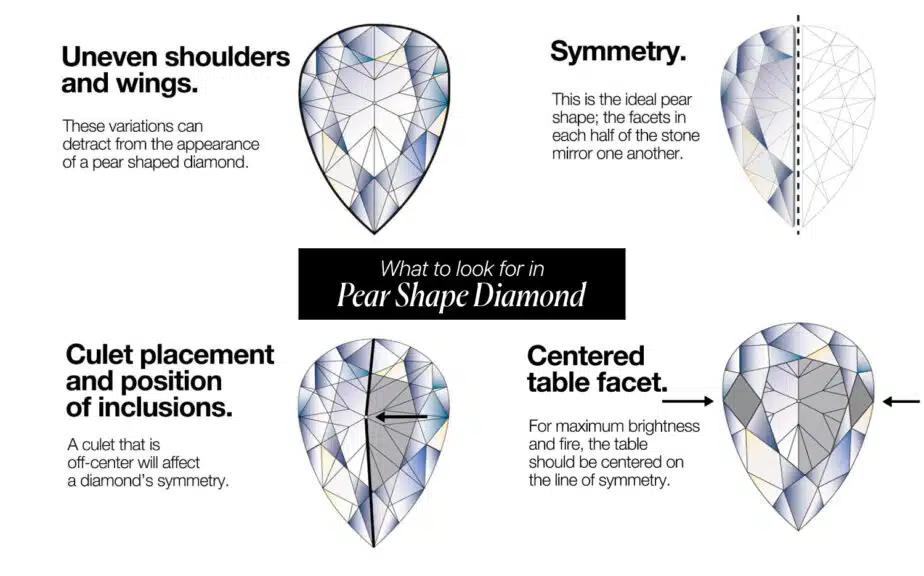
Mistake #6: Relying on the Certificate for Cut Quality
This is a trap built for buyers who have done their homework on round diamonds, but not on fancy shapes. They know “Cut is King” and go looking for the all-important “Excellent” Cut grade on the GIA certificate for their chosen pear shape.
The Harsh Reality: A Pear Shape Has NO Overall Cut Grade
To be perfectly clear: the GIA does not assign an overall Cut grade for any fancy-shaped diamond, including the pear. Your GIA report will provide grades for Polish and Symmetry, but it will not give you a simple summary of “Excellent,” “Very Good,” or “Good” for the stone’s light performance.
The Mehedi Solution: Be the Judge Using Proportions as a Starting Point
Without a cut grade to rely on, you have to act as the expert. To do this, you use the numbers on the certificate to filter out the obvious duds, and then you use your eyes to make the final call.
Mehedi’s Expert Starting Point for Pear Proportions
- Table %: 53% to 63%
- Depth %: 58% to 64% (stay under 68% as a hard rule)
- Polish & Symmetry: Insist on “Excellent” or “Very Good”
- Culet: “None” is ideal for a crisp, pointed tip.
These numbers will help you create a shortlist of high-potential diamonds. However, the most critical step is the visual inspection, because the nuances of a pear’s sparkle cannot be captured by numbers alone.
For a vendor that has perfected the technology that allows for this crucial visual step, it is vital to know about their practices before you buy. That’s why our insider’s guide on things to know about James Allen before you buy is a crucial resource.
James Allen: Our 5-Star Choice for Price and Selection
Check our comprehensive James Allen Review to learn more about their pricing and commitment.
Mistake #7: Buying It “Sight Unseen”
This final mistake ties all the others together. A buyer, feeling confident with a good GIA report, purchases a pear shaped diamond without ever looking at a high-quality video of the actual stone.
The Harsh Reality: A Pear is the Riskiest Shape to Buy Blind
As we’ve just learned, the certificate for a pear shaped diamond is missing a huge amount of critical information.
- It doesn’t have a Cut grade.
- It doesn’t tell you if the stone has a severe bow-tie.
- It doesn’t tell you if the shoulders are lopsided or if the overall shape is graceful.
As the veteran diamond dealer Mike Fried from Diamonds.pro rightly notes, he often has to look through 20-30 pear shapes to find a single one with a truly beautiful cut. It is a shape where the “duds” greatly outnumber the stunners. Buying this specific shape based only on a piece of paper is a massive gamble.
The Mehedi Solution: High-Quality Video is Non-Negotiable
You absolutely MUST buy your pear shaped diamond from a vendor who provides high-resolution, 360-degree videos of every single stone in their inventory. This is your most powerful tool, your virtual jeweler’s loupe, and it is the only way to be a confident buyer.
Your Final Video Inspection Checklist:
- Is the bow-tie minimal and does it “light up” as the diamond moves?
- Are the shoulders symmetrical and gracefully rounded?
- Does the diamond look brilliant and full of life?
- Is the “eye-clean” SI1 you’re considering actually eye-clean?
Top-tier online retailers like James Allen and Blue Nile have built their businesses on this very technology. They are essential tools for buying a complex shape like a pear with complete certainty. In fact, we show you exactly how to use these tools in our step-by-step guide to the Blue Nile Creative Studio.
Read Our 5-Star Blue Nile Review
Check our comprehensive Blue Nile review to learn why we rated Blue Nile 5 stars for their exceptional quality and value.
Alright, we’ve navigated the technical challenges. Now, let’s talk about the two factors that get every buyer excited: the price and the size. This is where the pear shaped diamond ring transforms from a complex choice into one of the most brilliant value propositions in the entire diamond world.
Is a Pear Shaped Diamond More Expensive?
Let me say it plainly: No. In fact, a pear shaped diamond is significantly less expensive than the classic round brilliant, which is the benchmark for diamond pricing.
The Insider Reason: “Yield from Rough”
The price difference all comes down to how efficiently a cutter can use the raw, unpolished diamond crystal. The octahedral shape of most rough diamonds is naturally better suited for creating pointed or elongated shapes. To cut a perfect round brilliant, a huge amount of that precious material (often over 50%) has to be ground away.
For a pear shape, the cutter can preserve much more of that original crystal. This higher “yield from rough” means less waste, and that cost savings is passed directly on to you. On average, you can expect a pear shape to be 10-30% less expensive than a round brilliant of the same carat weight and quality.
Real-World Pricing: What to Expect
To give you a realistic idea, here is a sample pricing table for a high-quality, GIA-certified natural pear shaped diamond, using our “sweet spot” recommendations of H color and eye-clean VS2/SI1 clarity.
| Carat Weight | Typical Price Range | Mehedi’s Expert Take |
| 1.00 Carat | $3,500 – $4,800 | A stunning 1 carat pear shaped diamond ring for a price that would get you a much smaller round. |
| 2.00 Carat | $12,500 – $17,000 | For the price of a standard 1.5ct round, you can get a spectacular 2 carat pear shaped diamond ring. |
| 3.00 Carat | $28,000 – $40,000+ | A true showstopper. The price for a 3 carat pear shaped diamond ring represents immense value compared to other shapes. |
This pricing makes even larger diamonds feel more accessible. For a deep dive on a specific size, you might find our analysis of a 4 Carat Solitaire Diamond Ring provides useful context on how these impressive stones are valued.
A Visual Guide to Pear Shape Sizes
This is where the pear shape’s value proposition gets even more exciting. Remember our golden rule: carat is a measure of WEIGHT, not of visual size. How big a diamond looks on a finger is all about its surface area, what we call its “spread.”
Because of its elongated teardrop silhouette, a pear shape has a significantly larger face-up size than a round, cushion, or princess cut of the exact same carat weight. It is a shape that is designed to look impressive.
The “Finger-Slimming” Effect
The elongated shape and pointed tip naturally draw the eye up and down the finger, creating a beautiful visual line that has a powerful lengthening and slimming effect. It’s a hugely flattering shape, especially on shorter or wider fingers.
The Carat-to-Millimeter Guide
Here’s a guide to the typical face-up measurements (length x width) you can expect from a well-proportioned pear shaped diamond.
| Carat Weight | Average Size (in MM) |
| 0.75 ct. | 7.5mm x 5.0mm |
| 1.00 ct. | 8.0mm x 5.5mm |
| 1.50 ct. | 9.0mm x 6.0mm |
| 2.00 ct. | 10.0mm x 7.0mm |
| 3.00 ct. | 11.0mm x 7.5mm |
Look at the 1-carat mark: an 8.0mm x 5.5mm pear looks substantially larger than the ~6.4mm diameter of a 1-carat round brilliant. It’s an optical illusion that works powerfully in your favor.
To see how these dimensions compare to all the other diamond shapes, you must have our complete Diamond Carat Size Chart open in another tab. It is an indispensable tool for visualizing the real-world impact of your choice.
How to Frame Your Teardrop Masterpiece
You’ve done the hard work and found your perfect, symmetrical, bow-tie-free pear. Now for the exciting final step: choosing its forever home. The setting is what gives your ring its personality and, crucially, its security.
The number one rule for a pear shaped diamond wedding ring is that the setting MUST protect the tip. Here are my top three recommended styles that do this beautifully.
The Solitaire Setting (with a V-Prong)
This is the quintessential choice for showcasing the pear’s unique silhouette.
- The Look: A solitaire setting is classic and elegant, putting the entire focus on the diamond itself. It allows light to enter the stone from all angles, maximizing its brilliance.
- The Non-Negotiable Detail: You absolutely must choose a solitaire with a “V-prong.” This is a specially designed metal prong that is grooved into a “V” shape to securely cup and protect that delicate pointed tip from chipping.
- A Perfect Example: This stunning Comfort Fit Solitaire from James Allen is the perfect execution of this style, offering timeless beauty and expert protection.
James Allen is a top leader in online diamond sales, offering cutting-edge imaging technology that lets you inspect diamonds as if you were using a jeweler's loupe. With the largest exclusive selection of loose diamonds available online and excellent pricing, they also boast one of the finest collections of lab-created diamonds on the market. They currently run a 25% discount on selected lab-grown diamonds!
WHAT WE LOVE ABOUT THEM:
- 30-day no-questions-asked return policy, with a prepaid shipping label provided by James Allen.
- Lifetime warranty on all purchases.
- Free international shipping.
- Complimentary prong tightening, repolishing, rhodium plating, and cleaning every six months.
- Insurance appraisals included with purchases.
- One free resizing within 60 days of purchase.
- Free ring inscriptions available.
- Best-in-class high-quality imagery for every diamond in stock.
- 24/7 customer support.
- Premium, best-in-class packaging.
The Halo Setting
This is the ultimate choice for the buyer who wants maximum sparkle and visual impact.
- The Look: A halo is a ring of tiny pavé diamonds that perfectly traces the teardrop outline of your center stone. It creates a seamless, breathtaking display of brilliance.
- The Advantages: A halo does two magical things: first, it makes your center stone look significantly larger (often by half a carat or more). Second, that “bumper” of tiny diamonds provides an excellent layer of protection for the entire girdle of your pear shaped diamond, including the tip.
- A Perfect Example: This beautiful Petite Micropavé Halo setting from Blue Nile is a masterclass in this glamorous and protective style.
The Three-Stone Setting
This is a deeply meaningful and visually stunning choice, perfect for adding a personal touch.
- The Look: Flanking your central pear with two smaller side stones creates a beautiful, horizontal spread across the finger. It’s a look with real substance and history.
- The Perfect Pairing: For a pear shape, the most elegant side stones are often tapered baguettes. Their long, clean, step-cut lines provide a gorgeous architectural contrast to the pear’s brilliant sparkle.
- A Perfect Example: You can see how incredible this combination looks in this Tapered Baguette Three-Stone Ring from James Allen. This entire process of mixing and matching is made simple with online tools, a process we explain in our full guide on how to build your own engagement ring on James Allen.
FAQs About Pear Shaped Diamond Ring
You’ve got the expert blueprint for avoiding the common mistakes. Now, let’s dive into the specific questions that every savvy buyer asks. Here are my direct, honest answers to everything you need to know.
The Verdict: A Shape for the Savvy & Stylish
The pear shaped diamond ring is a stunning, elegant choice that offers incredible brilliance and value. But as we’ve seen, it’s a connoisseur’s stone that rewards an educated buyer who knows how to look beyond the certificate. Its complexities are not weaknesses; they are the very things that make a truly great one so special and unique.
By avoiding these 7 common mistakes, you have moved from a regular customer to an informed expert. You now know how to judge its graceful shape, hunt for a cut that is free of a distracting bow-tie, and choose a setting that will protect its delicate beauty for a lifetime. You have the knowledge to find a pear shaped diamond engagement ring that is truly spectacular.
Continue Your Research Journey
You are now an expert on the beautiful and complex pear shaped diamond. Whether you’re ready to start building your own ring, dive deeper into the top retailers, or explore another unique diamond shape, these hand-picked guides are the perfect next step on your path to the perfect ring.
In-Depth Retailer Reviews & Guides
- Our #1 Recommended Retailer: The Ultimate James Allen Review – (https://moissanitebyaaurelia.com/james-allen-review/)
- The Industry Heavyweight: The Complete Blue Nile Review for 2024 – (https://moissanitebyaurelia.com/blue-nile-reviews-2024/)
- The Broader Market: A Guide to the Top Jewelry Retailers – (https://moissanitebyaurelia.com/top-jewelry-retailers/)
Advanced Diamond Knowledge
- Understanding the Reports: An Expert’s Guide to IGI Diamond Certification – (https://moissanitebyaurelia.com/igi-diamond-certification/)
- The Other Step-Cut Sibling: An Expert Guide to the Asscher Cut Diamond – (https://moissanitebyaurelia.com/asscher-cut-diamond/)
- For the Value Hunter: An Insider’s Look at SI2 Diamond Clarity – (https://moissanitebyaurelia.com/si2-diamond-clarity-chart/)
Practical Guides & Strategies
- Considering a Modern Alternative?: An Expert Guide to Lab-Grown Diamonds – (https://moissanitebyaurelia.com/types-of-lab-grown-diamonds/)
- The Ultimate Starting Point: Where Are the Best Places to Buy Engagement Rings Online? – (https://moissanitebyaurelia.com/best-places-to-buy-engagement-rings-online/)
- Get a Price Check: The Aurelia Diamond Rate Calculator – (https://moissanitebyaurelia.com/diamond-rate-calculator/)

